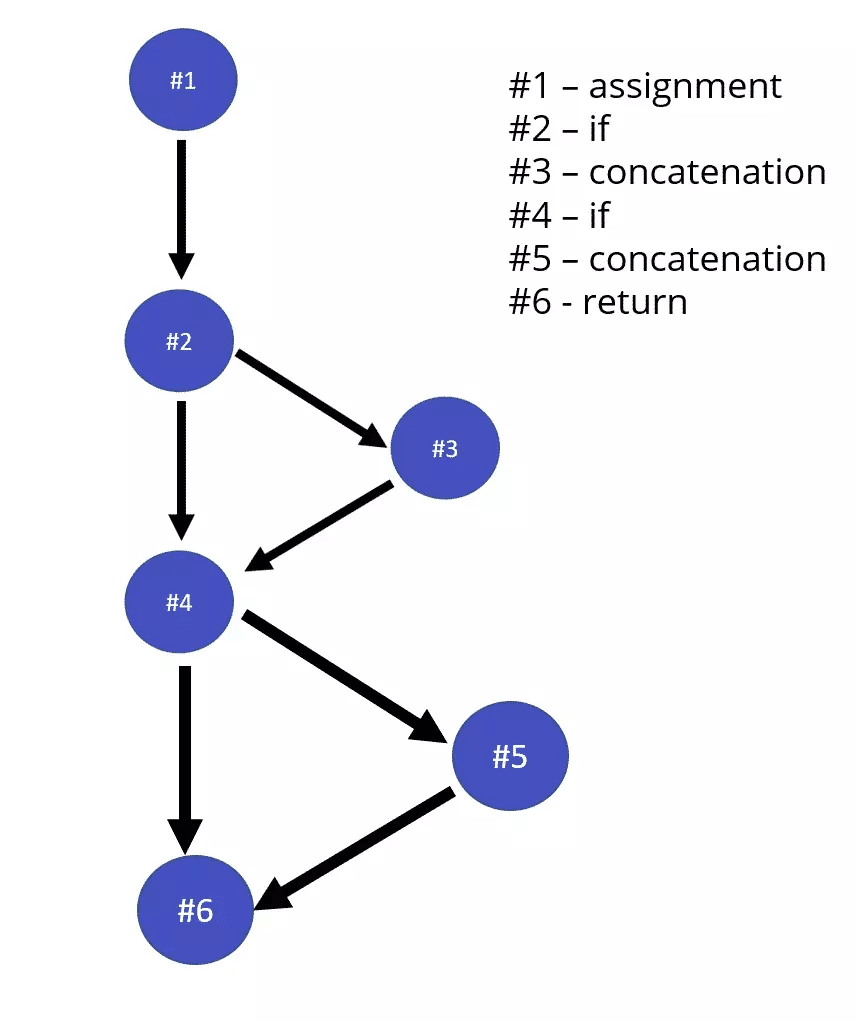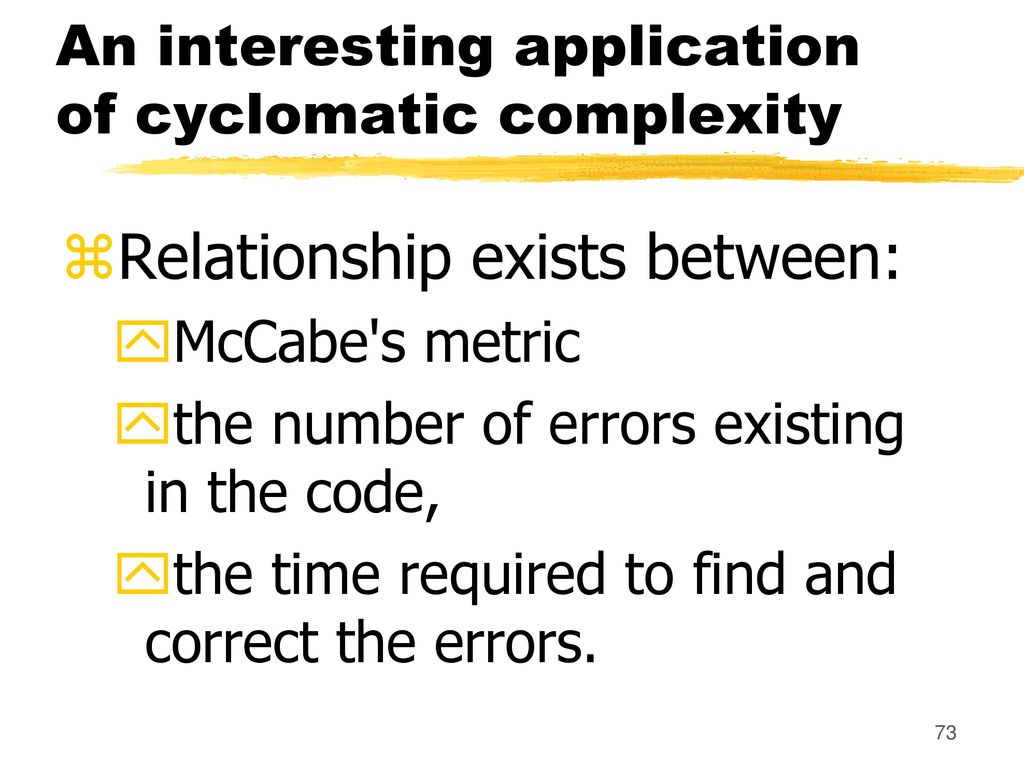Introduction to Cyclomatic Complexity
Cyclomatic complexity might sound like a mouthful, but it's a simple dconcept once you get the hang of it. Let's break it down.
What is Cyclomatic Complexity?

Imagine you're driving on a road with multiple intersections. Each intersection gives you a choice of which direction to take. Cyclomatic complexity is like counting how many choices you have as you navigate through your code. The more choices you have, the more complex your code becomes.
Why is Cyclomatic Complexity Important?
Cyclomatic complexity helps us understand how difficult our code is to test and maintain. High complexity means there are many possible paths through the code, making it harder to catch bugs and make changes without breaking things.
Applications of Cyclomatic Complexity
The applications of cyclomatic complexity ranges to many sectors, like:

Software Engineering and Development
Cyclomatic complexity in software engineering and development follows as:
- Code Analysis: By calculating cyclomatic complexity, developers can identify parts of the code that are more complex and might need refactoring or further attention.
- Code Optimization: High cyclomatic complexity often indicates areas of code that can be simplified or optimized to improve performance and readability.
- Design Evaluation: It helps in evaluating the design of software modules and classes, ensuring they adhere to principles of simplicity and maintainability.
Quality Assurance and Code Review
Cyclomatic complexity uses in quality assurance and code review is shown as:
- Identifying Risky Code Paths: High complexity code paths are more prone to errors, so QA teams can focus their testing efforts on these areas to ensure robustness and reliability.
- Setting Standards: Establishing cyclomatic complexity thresholds as part of coding standards helps maintain code quality and consistency across the development team.
- Prioritizing Code Review: Code sections with high complexity scores can be prioritized for thorough review during the code review process, reducing the likelihood of bugs slipping through.
Code Refactoring and Maintenance
In code refactoring and maintenance, the applications of cyclomatic complexity are the following:
- Guiding Refactoring Efforts: It provides a quantitative measure to identify areas of the codebase that are candidates for refactoring, making it easier to prioritize and allocate resources effectively.
- Reducing Technical Debt: Addressing high complexity code through refactoring helps in reducing technical debt and ensuring the long-term maintainability of the software.
- Improving Code Understandability: Simplifying high complexity code improves its readability and makes it easier for developers to understand and modify, thus facilitating smoother maintenance activities.
Benefits of Managing Cyclomatic Complexity
In this section, you will find the benefits of managing cyclomatic complexity.
Enhancing Code Maintainability
Cyclomatic complexity assists in enhancing code maintainability:
- Simplified Code Structure: By reducing complexity, you're simplifying your codebase, which means it's easier for developers to understand and modify when needed.
- Faster Bug Fixes: With less complex code, tracking down and fixing bugs becomes a breeze. There are fewer tangled pathways to navigate, saving time and effort.
- Reduced Risk of Technical Debt: High complexity code tends to accumulate technical debt over time. By managing cyclomatic complexity, you're actively preventing this buildup, ensuring your codebase remains healthy and manageable in the long run.
Improving Code Testability
Cyclomatic complexity improves code testability through:
- Clearer Test Cases: When your code is less complex, it's easier to create comprehensive test cases that cover all possible scenarios. This means better test coverage and more robust testing.
- Easier Debugging: Low complexity code is inherently easier to debug. When issues arise, it's simpler to pinpoint the source of the problem and apply fixes without unintended side effects.
- Facilitates Automated Testing: Automated testing tools thrive on clean, manageable code. By managing cyclomatic complexity, you're paving the way for more effective automated testing, speeding up the testing process and improving overall quality.
Optimizing Code Performance
By optimizing code performance, cyclomatic complexity can:
- Reduced Overhead: High complexity code often comes with unnecessary overhead. By simplifying your code, you're eliminating this overhead, resulting in leaner and more efficient execution.
- Faster Execution: Simpler code tends to execute faster since there are fewer branching pathways to navigate. This means better performance for your software, especially in critical or time-sensitive applications.
- Scalability: Clean, low complexity code is inherently more scalable. As your software grows and evolves, managing cyclomatic complexity ensures that it remains agile and responsive to changing requirements.
Tools for Cyclomatic Complexity Analysis
There are several tools for cyclomatic complexity analysis, like:
- Linters: Linters like ESLint and PyLint often include cyclomatic complexity analysis as one of their features. They can flag high complexity functions or modules, allowing you to address them during code review.
- Static Code Analysis Tools: Tools such as SonarQube and CodeClimate provide detailed reports on various code metrics, including cyclomatic complexity. They offer insights into complex areas of your codebase and suggest improvements.
- IDE Plugins: Many Integrated Development Environments (IDEs) offer plugins or built-in features for cyclomatic complexity analysis. For example, Visual Studio Code has extensions like CodeMetrics that calculate and display complexity metrics directly in the editor.
Frequently Asked Questions(FAQs)
What is cyclomatic complexity in software development?
Cyclomatic complexity measures the number of linearly independent paths through a program's source code, helping developers understand the code's complexity and potential for errors.
How is cyclomatic complexity calculated?
Cyclomatic complexity is calculated using a formula: M = E - N + 2P, where E is the number of edges, N is the number of nodes, and P is the number of connected components in a program's flow graph.
Why is cyclomatic complexity important for testing?
High cyclomatic complexity indicates more potential paths through a program, requiring more tests to achieve adequate coverage and ensure reliability and maintenance ease.
What is a good cyclomatic complexity score?
A score of 10 or below is typically considered good, suggesting that the code is reasonably maintainable and testable. Scores above 20 indicate high complexity and potential maintainability issues.
How can cyclomatic complexity be reduced in a codebase?
Reducing cyclomatic complexity can be achieved by refactoring complex methods, breaking them into smaller, more manageable functions, and removing unnecessary conditional logic.
